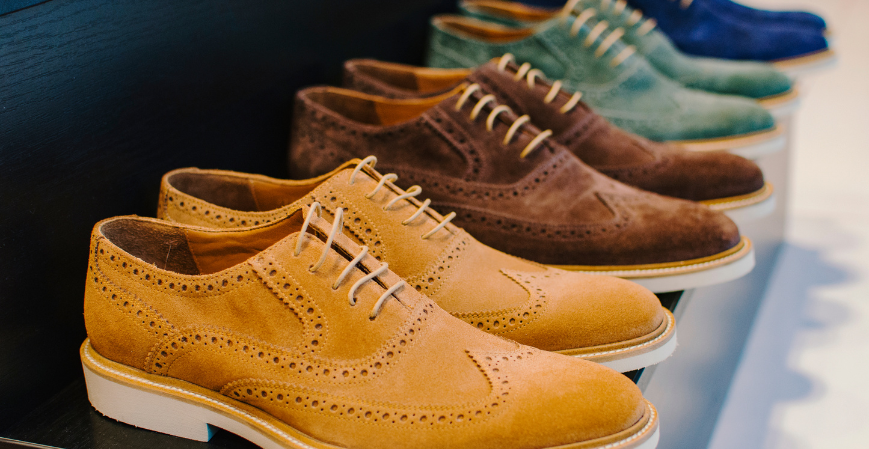The United States men’s footwear market was valued at USD 156.50 billion in 2024 and is forecast to reach USD 272.44 billion by 2034, growing at a CAGR of 5.70% during the period 2025–2034. Strong consumer demand, fashion-forward trends, and innovation in materials are driving consistent growth across all footwear segments.
Overview of the United States Men’s Footwear Market
Men’s footwear in the U.S. spans a wide range of categories—from sneakers and sports shoes to formal dress shoes and boots. The market benefits from both functional demand and fashion appeal, with American consumers spending more on footwear not just for performance, but also as a style statement.
The sector is supported by a mix of global giants, domestic brands, premium labels, and direct-to-consumer startups. Product innovation, celebrity collaborations, sustainable manufacturing, and online-first retail models are transforming how men shop for shoes in the U.S.
Key Trends in the U.S. Men’s Footwear Market
Rising Popularity of Sneakers and Athleisure Styles
Sneakers continue to dominate the U.S. men’s footwear market, blending comfort with trend appeal. Athleisure trends have blurred the lines between sports and lifestyle, making sneakers suitable for casual, semi-formal, and work environments.
Sustainable Footwear is Gaining Ground
Eco-conscious consumers are pushing brands to adopt recyclable materials, vegan leather, and low-carbon manufacturing. Brands like Adidas and Allbirds are actively promoting sustainable men’s footwear lines.
Customization and Limited Editions
Personalized footwear, artist collaborations, and limited-edition drops are drawing attention. These exclusives create urgency and attract fashion-savvy buyers.
Growth in Online Footwear Sales
Men are increasingly buying shoes online due to wider availability, virtual fitting tools, and hassle-free return policies. Direct-to-consumer (DTC) channels are outperforming traditional retail in certain segments.
Cross-Category Versatility
Multi-functional shoes that combine elements of comfort, formality, and durability are becoming popular—especially with urban professionals who prefer fewer but more versatile shoe options.
Access the Free Sample Report with ToC – Click Now
Growth Drivers of the U.S. Men’s Footwear Market
Increasing participation in sports, fitness, and outdoor activities
Shift toward casual and comfort-focused workwear post-pandemic
Influence of pop culture, influencers, and athlete endorsements
Expansion of premium and luxury men’s footwear segments
Strong retail and e-commerce infrastructure supporting easy accessibility
Role of Men’s Footwear in the U.S. Lifestyle and Fashion Market
Footwear is no longer just a functional necessity—it plays a vital role in defining a man’s personal style. From streetwear-inspired sneakers to rugged boots and sleek leather formals, shoes are an integral part of identity and fashion culture in the U.S.
The market supports multiple buying occasions—office wear, travel, gym, weddings, sports, and more. With increasing awareness of quality, design, and material sustainability, men are now more involved and discerning in their footwear choices than ever before.
United States Men’s Footwear Market Forecast (2025–2034)
The U.S. men’s footwear market is on a steady growth trajectory, driven by strong demand in the casual and sports shoe segments, along with increasing interest in premium formal footwear. The market, valued at USD 156.50 billion in 2024, is projected to reach approximately USD 185.11 billion by 2027, USD 222.54 billion by 2030, and ultimately USD 272.44 billion by 2034. This upward trend is expected to be fueled by continued urban retail expansion, the influence of celebrity and social media-driven branding, and a growing consumer preference for footwear that combines quality, comfort, and sustainable design.
Competitive Landscape of the Men’s Footwear Market in the U.S.
The market is competitive and fragmented, with a mix of heritage players, sportswear giants, and niche brands catering to different lifestyle segments.
Nike, Inc. – The leading men’s footwear brand in the U.S., known for performance sneakers, casual shoes, and limited editions.
Adidas AG – Offers a wide range of stylish and performance-oriented shoes, from Ultraboost to Samba and Gazelle.
Puma SE – Gaining popularity through athleisure collections and collaborations.
Under Armour, Inc. – Strong focus on sports performance and tech-driven footwear.
New Balance Athletics, Inc. – Known for comfort, craftsmanship, and wide-fit styles.
Skechers USA, Inc. – Offers affordable, comfort-focused casual and walking shoes.
Rossignol Group – Expanding its premium and outdoor footwear presence in the U.S.
Others – Include Timberland, Vans, Cole Haan, Allen Edmonds, and digitally native brands like Allbirds and Greats.
Market Segmentation by Type
Casual Shoes
The largest and most dynamic segment, with strong demand for slip-ons, sneakers, and hybrid casual styles.
Sports Shoes
Used for running, training, gym, and other athletic activities. Demand driven by health consciousness and sports culture.
Formal Shoes
Leather and synthetic formal shoes are slowly recovering post-COVID as hybrid workplaces return.
Boots
Popular in colder regions and among professionals in construction, security, or outdoor activities.
Sandals
Preferred in warmer states and casual settings; open-toe comfort continues to appeal across age groups.
Others
Includes moccasins, loafers, flip-flops, and specialty footwear.
Market Segmentation by Material
Leather
Preferred for formal, luxury, and durable shoes. High value per unit despite the shift toward vegan options.
Synthetic
Cost-effective and widely used across casual, sports, and entry-level segments.
Canvas
Lightweight and breathable, canvas shoes are gaining popularity for summer and urban wear.
Rubber
Essential for soles and sandals; also used in boots for waterproofing and durability.
Others
Includes cork, recycled materials, mesh, and eco-friendly fabrics.
Market Segmentation by Region
New England
Demand led by premium leather shoes, formal wear, and outdoor boots.
Mideast
Urban markets like New York and Pennsylvania show strong interest in fashion-forward and designer footwear.
Great Lakes
Steady sales of winter boots and all-weather shoes due to the regional climate.
Plains
Higher sales of work boots, hiking shoes, and utility footwear.
Southeast
Casual shoes and sandals dominate due to warmer climate and beach lifestyle.
Southwest
Cultural influences drive interest in boots, leather shoes, and statement styles.
Rocky Mountain
Preference for rugged, outdoor, and hiking footwear in colder and mountainous areas.
Far West
California and surrounding areas show strong demand for sneakers, sustainable footwear, and athleisure styles.
Frequently Asked Questions
What is the current size of the U.S. men’s footwear market?
The U.S. men’s footwear market is valued at USD 156.50 billion in 2024.
How fast is the U.S. men’s footwear market growing?
The market is expected to grow at a CAGR of 5.70% between 2025 and 2034.
What is the projected market value of men’s footwear by 2034?
It is projected to reach around USD 272.44 billion by 2034.
Which companies dominate the U.S. men’s footwear market?
Major players include Nike, Adidas, Puma, Under Armour, New Balance, Skechers, and others.
What are the most popular types of men’s footwear in the U.S.?
Casual shoes and sports shoes dominate the market, followed by formal shoes and boots.
Which materials are commonly used in men’s shoes?
Leather, synthetic, canvas, and rubber are the most widely used materials.
Which regions in the U.S. show high demand for men’s footwear?
The Far West, Mideast, and Southeast regions are leading in men’s footwear consumption.
Media Contact:
Company Name: Claight Corporation
Email: sales@expertmarketresearch.com
Toll Free Number: +1-415-325-5166 | +44-702-402-5790
Address: 30 North Gould Street, Sheridan, WY 82801, USA
Website: https://www.expertmarketresearch.com


